 Ductwork is what originally allowed air conditioning and heating systems to spread conditioned air throughout a house, rather than concentrating it in one place. The earliest ducted systems were nothing more than metal pipes extending from basement furnaces (or even just fireplaces) that allowed heat to rise to different rooms in a building. Today, forced-air central AC and heating systems use powerful air handlers and efficient ducts to see that comfort is sent throughout a house.
Ductwork is what originally allowed air conditioning and heating systems to spread conditioned air throughout a house, rather than concentrating it in one place. The earliest ducted systems were nothing more than metal pipes extending from basement furnaces (or even just fireplaces) that allowed heat to rise to different rooms in a building. Today, forced-air central AC and heating systems use powerful air handlers and efficient ducts to see that comfort is sent throughout a house.
But technology has also developed ductless HVAC systems. Also called ductless mini split heat pumps, these HVAC systems operate like standard heat pumps (cooling and heating air through circulation of refrigerant), but the single outdoor unit connects through walls to separate air handlers placed around the house. Each air handler has its own fan and refrigerant coil so it can blow the cooled or heated air directly into the living space—no ductwork required.

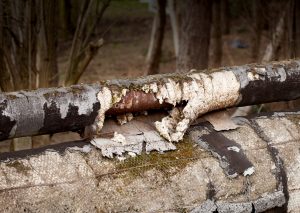 The water main is as essential as household plumbing pipes get. After all, if you don’t have water piped into your house from the municipal water supply, you don’t have water in your house and you don’t have much use for a plumbing system at all!
The water main is as essential as household plumbing pipes get. After all, if you don’t have water piped into your house from the municipal water supply, you don’t have water in your house and you don’t have much use for a plumbing system at all!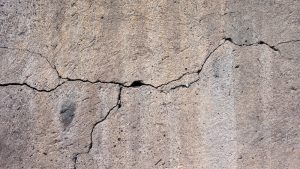 We’ve addressed the topic of slab leaks on our blog before, but here’s a quick rundown. Slab leak is a professional plumbing term for any pipe leaks that occur down in the concrete foundation of a building. The term can sometimes apply to any pipe leak in hardscape or rock, but for the purposes of your home we’re using it for the hot and cold water pipes under your house.
We’ve addressed the topic of slab leaks on our blog before, but here’s a quick rundown. Slab leak is a professional plumbing term for any pipe leaks that occur down in the concrete foundation of a building. The term can sometimes apply to any pipe leak in hardscape or rock, but for the purposes of your home we’re using it for the hot and cold water pipes under your house. Most households use more water than they should on a day-to-day basis. And that adds up to higher water bills on a month-to-month basis. Some of this water waste comes from bad habits (such as running the faucet while brushing your teeth rather than shutting the faucet off until you need it). Others are plumbing concerns that will require some assistance from your favorite local plumbing contractors—which we hope is us! If we’re not yet, we’ll soon be your favorite after you call for professional
Most households use more water than they should on a day-to-day basis. And that adds up to higher water bills on a month-to-month basis. Some of this water waste comes from bad habits (such as running the faucet while brushing your teeth rather than shutting the faucet off until you need it). Others are plumbing concerns that will require some assistance from your favorite local plumbing contractors—which we hope is us! If we’re not yet, we’ll soon be your favorite after you call for professional  You know that leaky anything isn’t good. A leaky faucet or a leaky pipe in your house isn’t something you want. But surprisingly, homeowners often leave problems like household leaks without repairs. They tolerate a leaking kitchen sink faucet as long as it isn’t making too much noise. They probably aren’t even aware of pipe leaks because they’re hidden behind walls and in the ceilings, but they may also ignore warning signs of these leaks, such as water stains on drywall.
You know that leaky anything isn’t good. A leaky faucet or a leaky pipe in your house isn’t something you want. But surprisingly, homeowners often leave problems like household leaks without repairs. They tolerate a leaking kitchen sink faucet as long as it isn’t making too much noise. They probably aren’t even aware of pipe leaks because they’re hidden behind walls and in the ceilings, but they may also ignore warning signs of these leaks, such as water stains on drywall.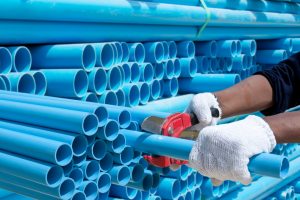 Remodeling older homes is a major industry today. There are entire magazines and hundreds of websites dedicated to how people can bring a tired, out-of-date house to sparkling modern new life. But this flashy remodeling may not be the remodeling your house needs the most. Behind the walls and under the floorboards are plumbing pipes that might be well past their prime and made from long-outdated metals. Replacing old pipes with new ones can rescue a home from numerous problems, including massive water waste, extensive water damage, and even toxic chemicals getting into drinking water.
Remodeling older homes is a major industry today. There are entire magazines and hundreds of websites dedicated to how people can bring a tired, out-of-date house to sparkling modern new life. But this flashy remodeling may not be the remodeling your house needs the most. Behind the walls and under the floorboards are plumbing pipes that might be well past their prime and made from long-outdated metals. Replacing old pipes with new ones can rescue a home from numerous problems, including massive water waste, extensive water damage, and even toxic chemicals getting into drinking water.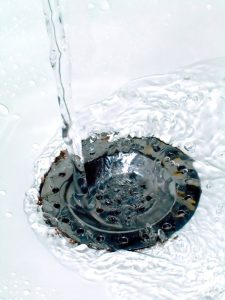 You want your home to be an attractive place—for you, your family, and your guests. And there are few things less attractive in an otherwise well-ordered home than to see insects buzzing around a drain.
You want your home to be an attractive place—for you, your family, and your guests. And there are few things less attractive in an otherwise well-ordered home than to see insects buzzing around a drain.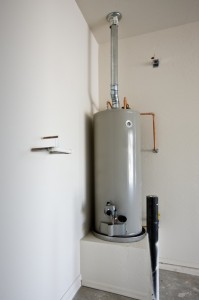 Unlike heating systems and air conditioners, the
Unlike heating systems and air conditioners, the  It’s a nice feeling knowing you won’t need to turn your furnace back on for several months—it means the warm weather and summer have arrived. You’re coming closer to the day when you’ll turn off your home’s furnace and leave it off.
It’s a nice feeling knowing you won’t need to turn your furnace back on for several months—it means the warm weather and summer have arrived. You’re coming closer to the day when you’ll turn off your home’s furnace and leave it off. If the heating system in your home is still working the way it should during the last few cold days of spring, you can probably shut it down for the summer without much worry. As long as you remember to schedule maintenance for it in fall before the first cold settles in for the end of the year, you shouldn’t need further
If the heating system in your home is still working the way it should during the last few cold days of spring, you can probably shut it down for the summer without much worry. As long as you remember to schedule maintenance for it in fall before the first cold settles in for the end of the year, you shouldn’t need further 





